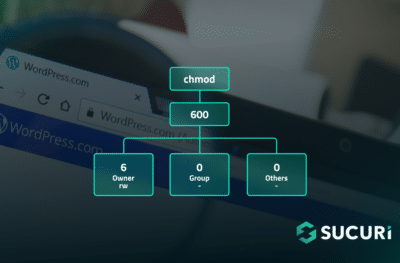Published on 05/18/2020 – Last Updated on 05/18/2020 by OTC
Posted by ChristopherHofman
Currently, many businesses face challenging times and are moving their SEO budget to disciplines which offer quicker wins.
But you can also create instant results with SEO, and it can be done on a small budget even when you are up against bigger players in your industry.
In this blog post I will show you my framework to do SEO sprints. I will show you how you can use Google’s ability to index and rank faster to your advantage. Later, you will be presented with a case study, where we used SEO sprints for a chain of opticians. The result: an increase in bookings of vision tests of 73%.
But first, let’s have a look at the layout on page one of Google (for most queries).
Google never took SEOs into account when designing for the user. As a result, their transformation over the last few years from the “10 blue links” format to “the portal” has pushed the organic results on page one down by several pixels.
Today, the four Google Ads at the top of the SERP cover most of the pixels above the fold. In many cases, your screen can also be covered with a Google Shopping ad. Apart from the ads, Google fills up the space on page one with SERP features such as featured snippets or their own platforms such as Youtube or Google Maps.
In some industries, Google will even place their booking search engine at the top. Examples are Google Flights or Google Hotels.
During the last few months we have seen more desktop traffic, but in general users are moving to mobile. An iPhone’s screen of 758 pixels makes it nearly impossible to rank above the fold for an organic result.
We, as SEOs, have to rethink our way of doing SEO.
The Google challenge
Do you know your numbers?
For a particular query, how high is the expected click-through-rate if you rank number one? Is it 20%? Twenty-five? These are the typical estimations coming from CTR benchmark studies. But in reality, for competitive queries, the right CTR will be much lower, which means that you could be basing your business case on the wrong numbers.
Instead, I would recommend looking at your Google Search Console data to see what your CTR is when ranking number one for a non-branded term.
As an example: In the retail industry I have a client ranking consistently at number one for a broad generic term with a monthly search volume of 2.8K. How high do you think their CTR is?
3.8%!

They are not the only ones with a meager CTR. Doing some research, I discovered that positions three and four for this query had CTRs of 1.1% and 2.4%, respectively.
When CTRs used to be higher, I went after the big keywords. At the peak of my “Big Keywords” career, I reached the number one ranking in Google (Denmark) for the biggest keyword in the banking industry: “Lån” (loan). It took one and a half years to go from the bottom of page three to number one in Google, and the investment paid off handsomely for the client.
The strategy was straightforward, with a focus on technical SEO, on-page, and off-page factors. In other words, SEO as we have always approached it. However, working with SEO in a silo frustrated me, because I felt that we could get better and faster results by working together across disciplines and across departments.
In October 2018, a new insight gave me the chance to rewire my SEO thought process. This led me to develop a new framework aligning SEO with other marketing activities.
The big insight: Google indexes and ranks faster
Back in the year 2000, Google updated their index every five to eight weeks. This gave SEO a reputation as a discipline where patience was key, and where results were a long-term project. This understanding is still common inside the industry, and many SEOs will still tell their clients to be patient and expect the results to come inside one or two years.
However, if you do it right, this is not the case anymore.
Let’s fast-forward to 2018: I discovered that Google had changed gears.
My client was planning to run a marketing campaign starting in October. My SEO team was invited late to the party, as I only met with the client two weeks before the campaign launch.
I was not too optimistic about the time frame to get them results, but we gave it a shot.
The results surprised me.
Inside 20 days, they went from not being indexed to ranking in the top three for their main keyword.
I was baffled. This was not the Google I knew.
This insight was huge, because it meant that SEO could break free of the classic silo and be part of other marketing activities.
The idea of the SEO sprint was born.
What is an SEO sprint?
Let’s stop and think for a minute.
How often do marketing campaigns ignore SEO? SEO data can actually be a central element in marketing, because the data reveals the inner feelings of users when they search on Google. This is data which would be very hard to get from qualitative interviews.
Have you tried to convert mentions to links months after a PR campaign ran?
Ever worked on an SEO project where you never talked to the PPC team (even though they have valuable information, like which keywords convert, that you can use for your SEO work)?
Have you delivered a tech audit with a long list of to-dos without really knowing what the business strategy was, hence the priorities of the SEO tasks?
These are examples of SEO working in a silo. Silos waste knowledge and they miss the big picture. Instead, SEO activities should be aligned with the marketing plan.
When you rank at the top of Google for the keywords and user intentions which support your business strategy, it is due to teamwork across your marketing department.
This is what SEO sprints are all about: Based on the company’s business strategy, SEO sprints are an integrated part of your marketing mix. They are SEO activities which support a marketing campaign, where the objective is to be present at the most important touch points in Google for particular customer journeys.

An SEO sprint consists of five steps:
- Strategy
- Data
- Insights
- Execution
- Measurement
I’ll dig into each of these steps in the case study below.
The secret behind a successful SEO sprint
In late 2018, I performed other SEO sprints, which proved to me that there was an opportunity to work differently within SEO. For example: a New Year’s campaign where the client’s main keyword went from out-of-index to the bottom of page one within 10 days. While they didn’t make the top three, they still obtained a 6% CTR from a ready-to-buy audience.
So, how can you use a sprint to rank faster in Google? Do sprints focus on links, content, or page speed?
Those factors are only partly important. The main ranking factor is the competition. Let’s face it: You rank number one at the mercy of your competition. It matters a lot for your ranking if competitors don’t focus their SEO efforts in the same direction as you.
In my experience, when broad media sites and forums rank, it’s a good sign that competition is not so strong. The ideal scenario is when competition is manageable and Google results have low volatility, meaning the results don’t fluctuate much. This is a signal to me that I can rank quickly and remain at the top of Google for a longer period.
While you should try to rank for all your keywords, the key is to identify and prioritize important, low-competition keywords to get results quickly. When you have established yourself, then you can start to build out your topical authority and aim for the keywords with tougher competition.
The DriveSafe case study
Let’s put the SEO sprint framework into practice. Nyt Syn is a Danish chain of 57 opticians. They have a 6% market share in a market dominated by three bigger players. During 2018 and 2019, I ran two successful SEO sprints for their DriveSafe campaign.
DriveSafe glasses are glasses produced by ZEISS. You can use them as normal eye glasses, but they are particularly useful to avoid being blinded by the headlights of oncoming cars at night. They retail at $500 (USD), so it is not a low-priced item, but they are the safest solution in the market.
The target group of the DriveSafe campaign is primarily 35-year-old women and above. They are not worse off than men when it comes to seeing badly at night, but our research showed that they are more ready to do something about it. Our main objective was to have them book an eyesight test at their local Nyt Syn optician.
The results
After running the first DriveSafe campaign in Q4 2018, which was fairly successful, we managed to triple the organic traffic during the second SEO sprint a year later.

During the period, 23.7% of the organic traffic to nytsyn.dk went to the DriveSafe pages. More importantly, Nyt Syn increased their bookings by 73% for the second campaign when compared to the first.
How we did it
1. Strategy
Before we started our SEO tasks, we needed to understand the objective of the DriveSafe campaign and how SEO would support the business goals.
In order to translate the marketing strategy into SEO activities, I use customer journeys to map out the customer needs and define the content touchpoints on Google.
This was our SEO mission statement:
“We are present in Google when users make queries related to night vision with the intent to solve a user challenge leading to the booking of an eyesight test.”
2. Data
You need to understand user behavior before you can execute your strategy. Fortunately, it has never been easier to get access to data. While many still stick to one tool (e.g. Google Keyword Planner or Moz), I have come to realize that the more tools you add, the more you will identify your user’s intentions. I use Google’s own tools (Google Search Console, Google Analytics) and different Clickstream tools (e.g. Moz Keyword Explorer). Each tool will bring something new to the table.
To this stack I also add the company’s own data sources, like live chat. It’snot only a tool to communicate with your customers! No one ever contacts a company simply to engage in small talk. The data from the chat history is a gold mine of user questions. Zendesk and Internal Site Search are two other underestimated resources, where small observations can turn into big insights.
In the end we managed to identify hundreds of keywords within the range from general symptom searches to specific product requests.
3. Insights
Insights depend on the strength of your data. If you don’t dive deep enough during data retrieval, you won’t get a full understanding of user behavior, thus missing out on important user intentions. By looking at the keyword list, we identified various user intentions. With them in hand we created customer journeys to map out which content to build or repurpose.
Here are the user intentions mapped out in different stages of the customer journey for this campaign:
Awareness: What is night blindness?
Consideration: Do I have a bad night vision? Can I use glasses with yellow tint?
Decision: DriveSafe glasses from ZEISS
We discovered four interesting insights from the data:
1. Early funnel content is notoriously underestimated. We identified the bridge between the symptom searches for “night blindness” in the early stage of the customer journey and the need to drive safely at night. By creating the page “What is night blindness?”, we answered the users’ symptom questions and moved them on in the funnel towards our solution.
2. The keyword data revealed a need from users to test their eye sight online. We converted a general eye vision test into a night vision test. The test took off. More than 180,000 users ended up completing the test via different channels.
To boost the general authority of the DriveSafe pages and this particular online test, we also acquired links. Apart from the extra authority, the referral traffic was decent.
3. We could see that users went for a premature choice when looking for a solution. If you are a mountain bike rider, you probably use cheap plastic glasses with yellow tint. These are not good for driving at night, but this was the best guess for many users.
An interview with a professor from the School of Optometry in Denmark revealed that glasses with yellow tint let in too much blue light. This is the light which our eyes are exposed to at night. Instead of ignoring users searching for yellow tinted glasses, we decided to warn them instead. The page “Don’t use glasses with yellow tint!” attracted a lot of traffic. It also showed that you can rank number one for keywords which counter the primary user intention on page one of Google.

4. The optometry industry jargon is different than the terms that users search for. Company policy can sometimes prevent you from optimizing your site for the user terms, but Nyt Syn embraced the opportunity.
There are 800 monthly searches for the query “natbriller” (night glasses). This is not an industry term, but we decided to create a page with it anyway It paid off. Nyt Syn has now ranked consistently number one and two on Google for this important keyword for more than a year, bringing in lots of profitable traffic.
The search terms mentioned in the last two insights. are low competition, low volatility keywords, which made us rank quickly. An instant result motivates the team, and it builds authority in the eyes of Google. Subsequently, this enabled us to rank for more difficult search terms. Today we rank in the top three for over 100 non-branded keywords, and every tenth search results in a click on a DriveSafe page.
4. Execution
From these insights, the Nyt Syn content team went to work on the pages we needed to be present at every important touch point in Google.
The team is small with only one content writer. However, this case shows that you don’t need to be a big team to beat your competitors as long as you know where to focus. In total, five pages were created and a couple of existing pages were repurposed.
You need some time at this step, since it takes time to write great content. At this point we also prepared a link building strategy based on advertorials, which we rolled out during the campaign.
We were ready to launch.
5. Measurement
We use a dashboard to constantly measure the performance and gain new insights. This enabled us to change course midway if necessary.
Here are two good examples:
1. One month after the launch of the second SEO sprint, Nyt Syn decided to run two Facebook campaigns based on the SEO data. The first campaign aimed at getting users to take the online night vision test. The second campaign told users to avoid glasses with yellow tint for night driving.
The two campaigns worked great and increased the number of bookings significantly. This was a perfect example of using SEO data across channels.
2. During the campaign we obtained some nice customer testimonials. With the customers’ permission, we placed them on the DriveSafe pages. This enabled us to display the five star ratings in the Google SERPs, which lifted the general CTR overnight by 2-5%.

Learning and adjusting is central to SEO sprints. With Google’s ever-changing landscape, we need to be agile and ready to adapt. We learn from each SEO sprint and use what worked for the next sprint to constantly improve the results.

The third SEO sprint for DriveSafe is set for September. What can we do to build upon our past achievements?
Let me leave you with some insights gained, which you can hopefully use for your own campaigns:
1. GSC data tells us when users will start searching for night vision search terms. This means that we know when to launch our campaign next time. For SEO sprint one, we had a blank page. We could only use Google Trends data, so it started in October. Now we run it from mid-September because the data tells us that users are asking Google earlier.
2. GSC data will reveal new user intentions because we are building up more data. This data, coupled with customer feedback, creates a base to produce even more relevant content and thereby a better chance to own the most important touch points on Google.
3. From our PPC data, we now have more data to know which keywords generate orders and vice versa. We will have more GSC data to add new keywords to our Google Ads.
4. By A/B testing the communication on Google Ads and Facebook, we know which words and which USPs work. We can use these insights to update titles and meta descriptions to communicate more directly on Google.
5. We know that SEO insights can be used to create successful Facebook campaigns. We will double down on Facebook and test other channels such as Instagram.
6. We know which links brought us referral traffic, so we will focus on similar links for the third sprint. While it is only correlated data, we can compare the ranking history with the publication of advertorials to look for keyword jumps. Some advertorials are duds. Some are gold. It does help us to pick the better link opportunities.
7. We got the star ratings for the DriveSafe pages. By studying the Google landscape, we can see which other Schema markups we should add.
Summary
Companies are currently looking for instant results, which make them put SEO on hold. However, with SEO sprints you have an agile framework to get quick results — when done right.
You can use Google’s speed in indexing and ranking results to your advantage. It will enable your organization to integrate SEO as part of the marketing mix. While you can now rank inside a few days or weeks, fast rankings will depend on the level of competition on page one in Google. When you have low competition and low volatility for keywords with strategic importance, then you have found your sweet spot for quicker results and stable traffic long-term.
SEO sprints consist of five steps, and they can be performed on a small budget inside a short period. The learnings from one SEO sprint are passed on to the next one, so you can reuse what worked efficiently.
Good luck with your SEO sprint!
Sign up for The Moz Top 10, a semimonthly mailer updating you on the top ten hottest pieces of SEO news, tips, and rad links uncovered by the Moz team. Think of it as your exclusive digest of stuff you don’t have time to hunt down but want to read!
![]()












Comments